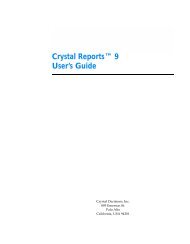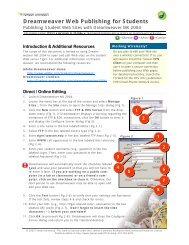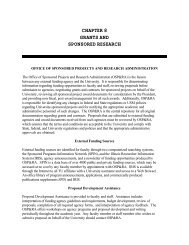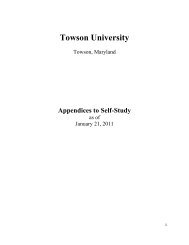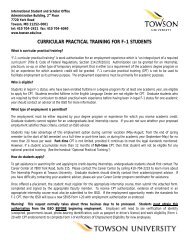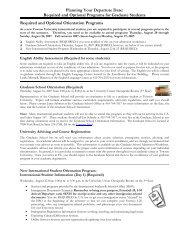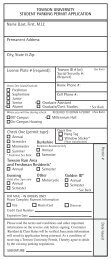Guidelines For the Safe Use & Disposal Of Ethidium Bromide
Guidelines For the Safe Use & Disposal Of Ethidium Bromide
Guidelines For the Safe Use & Disposal Of Ethidium Bromide
You also want an ePaper? Increase the reach of your titles
YUMPU automatically turns print PDFs into web optimized ePapers that Google loves.
<strong>Ethidium</strong> bromide (EtBr) is a potent mutagen that has been used for many years for <strong>the</strong><br />
visualization of nucleic acids in agarose gels. This material fluoresces a red-orange color<br />
under ultraviolet light and with increased fluorescence when bound to double-stranded<br />
DNA. EtBr is typically purchased in powder or solution form and is soluble in water. The<br />
crystal or powder form is odorless and appears dark red in color.<br />
The powder form is considered an irritant to <strong>the</strong> upper respiratory tract, eyes and skin.<br />
EtBr is strongly mutagenic, causing living cell mutations. Even though <strong>the</strong>re is no evidence<br />
at this time of human carcinogenicity or teratogenicity, this material should be considered<br />
a possible carcinogen or teratogen and all possible precautions taken to minimize<br />
potential exposures. While it is not specifically listed as a hazardous waste, its mutagenic<br />
properties may present a hazard if not managed properly.<br />
When purchasing EtBr make sure that you purchase <strong>the</strong> smallest amount possible for your<br />
use. Stock quantities of unused EtBr should be returned to <strong>the</strong> supplier if possible. You<br />
should also check with o<strong>the</strong>r investigators in your area to see if <strong>the</strong>y could use <strong>the</strong><br />
product. When all o<strong>the</strong>r means of distribution have been eliminated <strong>the</strong>n you should call<br />
Environmental Health & <strong>Safe</strong>ty (EHS) to pick-up <strong>the</strong> unused product for disposal.<br />
I. Personal Protection Equipment (PPE)<br />
SAFE USE<br />
As in any laboratory, never eat, drink, smoke, handle contact lenses or apply cosmetics<br />
where EtBr or o<strong>the</strong>r chemicals are present. An operational emergency eyewash and<br />
shower should be immediately accessible. Wear a lab coat with sleeves rolled down,<br />
chemical splash goggles (NOT safety glasses), and nitrile disposable gloves when working<br />
with concentrated EtBr. Even when working with diluted concentrations, nitrile gloves<br />
should always be worn. Never re-use disposable gloves. Leave lab coats, gloves, and o<strong>the</strong>r<br />
Personal Protective Equipment (PPE) in <strong>the</strong> lab when your work is complete. To prevent<br />
<strong>the</strong> spread of this or o<strong>the</strong>r chemicals outside of <strong>the</strong> lab, EtBr users should also wash <strong>the</strong>ir<br />
hands thoroughly with soap and water after removing <strong>the</strong>ir gloves, even if <strong>the</strong>y are certain<br />
<strong>the</strong> gloves weren't punctured.<br />
Confine all work with dry EtBr to a properly functioning, uncluttered chemical fume<br />
hood - be sure <strong>the</strong> hood sash is at <strong>the</strong> correct height (< 12 inches). Also, consider using<br />
pre-mixed solutions or pre-measured quantities. As with all hazardous substances, work<br />
on a disposable mat in <strong>the</strong> hood, and dispose of used mat properly after work is done.<br />
Whenever weighing dry EtBr, use a chamber or enclosed weighing station to<br />
reduce/eliminate cross drafts which can affect <strong>the</strong> performance of <strong>the</strong> scales and also<br />
eliminate <strong>the</strong> potential for airborne contamination.<br />
2



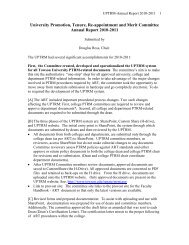
![MEMORANDUM OF UNDERSTANDING [Template] Towson ...](https://img.yumpu.com/51078365/1/190x245/memorandum-of-understanding-template-towson-.jpg?quality=85)
